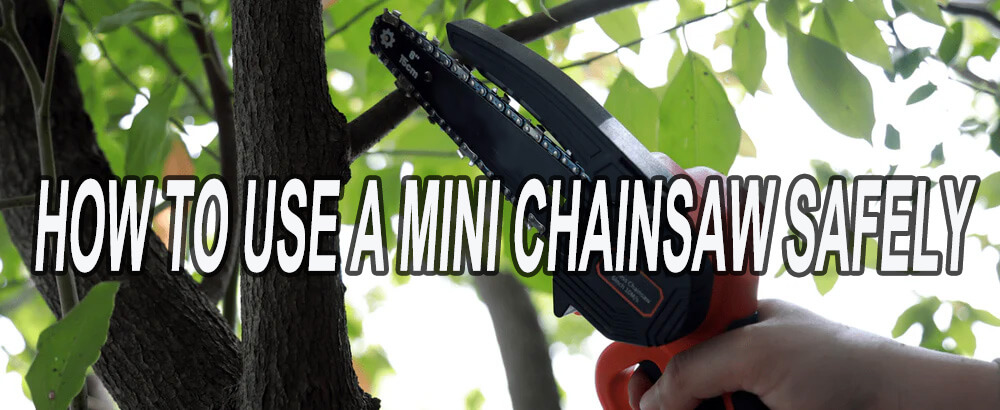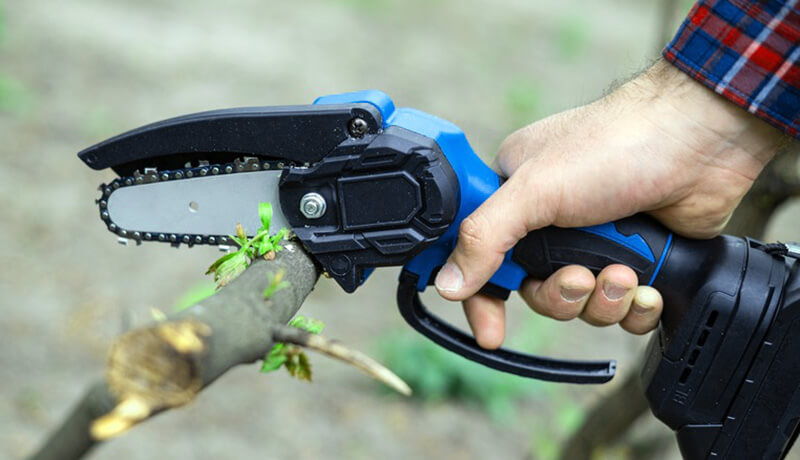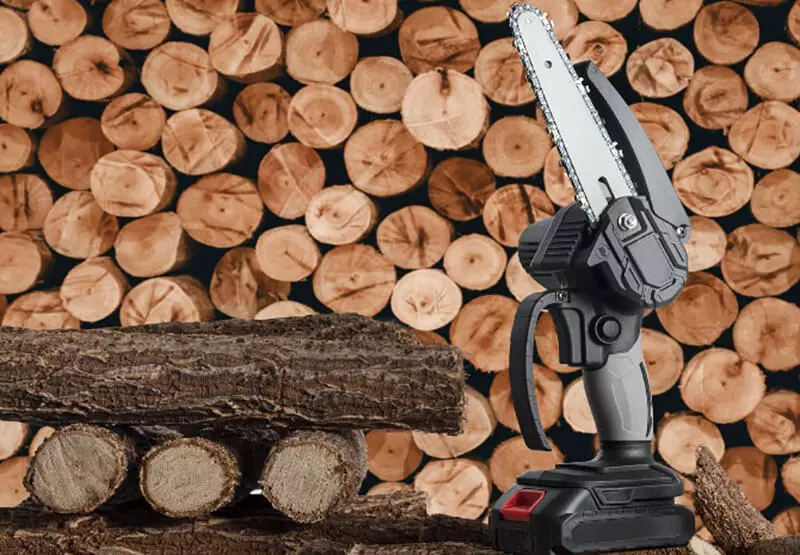13Mar 2025
table of contents

Mini chainsaw is a smaller, lighter alternative to traditional chainsaws. It’s built for minor tasks and easy handling. Portable and user friendly, it suits homeowners, DIYers and beginners. Its compact size and ergonomic design allow precise, efficient cuts without the weight of a full size chainsaw.
However, using them safely is crucial. Mistakes can lead to serious risks. Proper operation is key to safety and success.
This guide from BISON covers everything about mini chainsaws. Learn setup, safe use, and maintenance. These tips ensure safety and maximize performance. Let’s begin!
Assembling a mini chainsaw correctly is vital for smooth use and optimal performance. Use these step by step guidelines to prepare mini chainsaw for action:
Begin by choosing proper guide bar and chain for mini chainsaw. The sizes should match the specifications provided by manufacturer to avoid performance issues or safety hazards. Using wrong guide bar or chain can cause improper functioning or even damage to chainsaw.
Carefully place the cutting chain into the grooves of the guide bar. Make sure the chain is not installed upside down. The sharp teeth should point in the correct direction as indicated in the manual or on the chain itself. A chain installed in reverse will not cut properly and can cause dangerous situations or damage.
Align the guide bar and chain with the mounting points on the chainsaw body. Securely attach them to mini electric chainsaw per manufacturer's instructions. This step usually involves sliding guide bar into place and wrapping chain around the drive sprocket. Make sure all components are properly aligned before securing everything.
Keep the chain tension right. A loose chain can slip and cause injuries. A tight chain can harm the saw and cut poorly. Find the tensioning screw on mini chainsaw and adjust it until the chain is taut but can still be easily pulled slightly away from guide bar. Test the tension by gently pulling on the chain, it should snap back into place without excessive slack.
Lubrication cuts friction between the chain and bar. And prevents overheating and makes mini chainsaw last longer. Applying chain oil to the guide bar and chain is recommended.

Mini chainsaws work best on small, soft materials. Use them for bamboo, branches, shrubs or small trees. They’re great for pruning and cutting firewood.
Mini chainsaws are basically incapable of cutting thick logs or hardwoods, and forcing them to do so may result in motor damage or other problems.
Before using a mini chainsaw, wear appropriate protective gear, including:
Put on safety glasses to guard your eyes from debris.
Gloves with a good grip to prevent slips.
Wear hearing protection if mini chainsaw is loud.
Long sleeves and protective clothing to minimize the risk of injury.
Remove any objects or obstacles that might get in the way of your cut, and make sure you're on solid footing while working.
Using cutting bamboo as an example, the basic process is explained:
Place the mini chainsaw on the object you want to cut
Place mini chainsaw firmly on the bamboo. Ensure bamboo is steady before cutting. Do not hold it by hand, use a bench or clamp for proper stability.
Press the power switch and guard lock at the same time to start the mini chainsaw. Most mini chainsaws use a dual switch system for added safety. This prevents accidental starts.
As the chain begins to cut into bamboo, apply gentle but constant pressure. Allow chain to gradually penetrate bamboo without applying force. This helps prevent jams and ensures a smooth cut. Mini chainsaws are designed to cut efficiently with minimal force. Applying too much force can cause chain to get stuck, the motor to overheat, and even shorten the life of mini chainsaw.
Observe the performance of your chainsaw during the cutting process. If the chain speed slows or problems occur, stop cutting immediately and check for problems. The chain tension may need to be adjusted, or material may be too hard for mini chainsaw. Clearing obstructions or performing maintenance can prevent long term damage.
After completing a task, allow mini chainsaw to cool down before performing maintenance or storing it. This helps prevent overheating and protects motor from wear and tear.
These steps will help you handle your mini chainsaw with ease and safety. Over time, you'll grow more skilled and confident, making your mini chainsaw an indispensable tool in your tool kit!

Besides safety use, Follow these tips to proper maintain your mini chainsaw can avoid accidents.
Do not touch the chain with your hands. Store mini chainsaw out of children's reach.
Lubricating often lowers friction and wear on the chain and bar. It also helps the tool cut better.
Regular sharpening ensures smooth and effective cutting while minimizing wear on mini chainsaw motor.
Replace worn parts. Chains, guide bars, and other parts will show signs of wear. Replace these parts as needed to maintain cutting results and avoid problems during operation.
This article by BISON explains how to safely use and care for your mini chainsaw. While it's relatively easy to operate, it demands focus and care. Stick to the tips shared to keep your chainsaw working well and stay safe. Thanks for reading—remember, proper maintenance and safety ensure long-lasting performance!
inquiry form here
BISON BLOG, All the latest news and views from Bison Machinery.